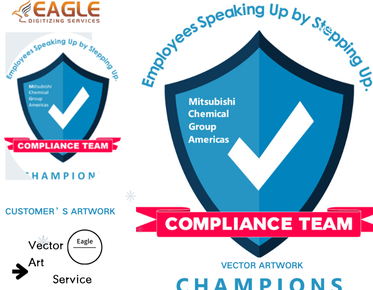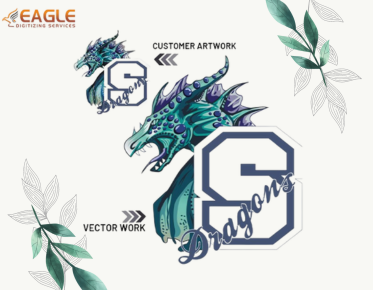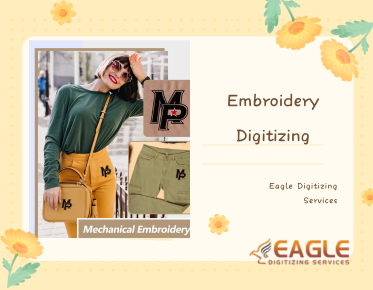Can Vector and Raster Images Coexist in Your Design?
In the vast realm of digital design, the debate between vector and raster images often surfaces. Each type of image has its unique strengths and weaknesses, but what if we told you that combining both could elevate your project to new heights? Let’s dive into the fascinating world of vector and raster images and explore how their harmonious integration can enhance your creative endeavors.
Understanding Vector and Raster Images
What Are Vector Images?
Vector graphics are formed by applying mathematical formulas that define geometric shapes like points, lines, curves, and polygons. Vector images are resolution-independent, as opposed to raster images, which are made up of pixels. This means they can be scaled to any size without losing quality, making them ideal for logos, icons, and any design that requires frequent resizing.
What Are Raster Images?
Raster images, on the other hand, are composed of a grid of pixels. Each pixel has a specific color value, and together they form the complete image. Common raster formats include JPEG, PNG, and GIF. Raster images excel in capturing rich details and complex colors, making them perfect for photographs and intricate graphics.
Key Differences Between Vector and Raster Images
The primary distinction between vector and raster images lies in their structure and scalability. While vector images maintain their clarity at any size, raster images can become pixelated when enlarged. Additionally, vector files are typically smaller in size compared to high-resolution raster files. These differences make each type of image suitable for different purposes in a project.
Why Use Both Vector and Raster Images in a Project?
Benefits of Combining Both Image Types
Utilizing both vector and raster images in a single project allows you to leverage the strengths of each format. Vectors provide crisp, scalable graphics, while rasters offer rich, detailed imagery. This combination can result in visually stunning and versatile designs.
Common Scenarios for Using Both
Projects that benefit from both image types include web design, where icons (vectors) and photographs (rasters) are often used together. Print media, such as brochures or posters, can also gain from the synergy of vectors and rasters, ensuring high-quality prints and engaging visuals.
Examples of Projects That Benefit from Both
Consider a website that features a detailed hero image (raster) with scalable icons and logos (vector) for different screen sizes. Another example is a marketing flyer that combines a detailed product photo with vector-based text and graphics, ensuring crisp printing at any size.
Technical Compatibility
File Formats: Vector vs. Raster
Vector images are typically saved in formats like SVG, EPS, and PDF, while raster images use formats such as JPEG, PNG, and GIF. Understanding the appropriate use of each format ensures optimal quality and compatibility.
Software Compatibility: What Tools You Need
Software like Adobe Illustrator and CorelDRAW are excellent for creating and editing vector images. For raster images, Adobe Photoshop and GIMP are widely used. Some programs, such as Affinity Designer and Adobe Illustrator, support both vector and raster editing, offering a versatile workspace for mixed-media projects.
Converting Between Vector and Raster Images
Conversion between vector and raster images is possible but should be approached with caution. Rasterizing a vector image can result in a loss of scalability while vectorizing a raster image might lead to loss of detail. Tools like Adobe Illustrator's Image Trace feature can help convert rasters to vectors, but manual adjustments are often necessary for optimal results.
Best Practices for Using Vector Images
When to Use Vector Images
Vectors are best used for designs that require scalability, such as logos, icons, and illustrations. They are also ideal for projects that demand precision and clarity at various sizes.
Tips for Creating and Editing Vector Images
Keep your vector designs simple and clean. Use layers to organize different elements and make use of the pen tool to create smooth curves. Regularly save your work in a compatible format like SVG to ensure scalability and editability.
Popular Vector Formats: SVG, EPS, PDF
SVG (Scalable Vector Graphics) is perfect for web use due to its XML-based structure, allowing for easy integration and animation. EPS (Encapsulated PostScript) is a versatile format suitable for print, and PDF (Portable Document Format) is widely used for sharing documents that include vector graphics.
Best Practices for Using Raster Images
When to Use Raster Images
Rasters are ideal for detailed images like photographs and complex graphics where color depth and intricate details are essential. They are also suitable for web graphics that need to support various color schemes and transparency levels.
Tips for Creating and Editing Raster Images
Work at the highest resolution possible to maintain quality. Use layers and masks in software like Photoshop to manage different elements and apply non-destructive edits. Always save a master file in a lossless format like PNG or TIFF before exporting to a compressed format.
Popular Raster Formats: JPEG, PNG, GIF
JPEG is great for photographs and images with gradients due to its efficient compression. PNG is best for graphics requiring transparency and high quality, while GIF is ideal for simple animations and images with limited color palettes.
Challenges of Combining Vector and Raster Images
Resolution and Scaling Issues
One of the primary challenges is maintaining resolution and clarity when combining scalable vector images with fixed-resolution raster images. Enlarging raster images can lead to pixelation, whereas vectors remain crisp.
Consistency in Design Aesthetics
Achieving a cohesive design aesthetic can be tricky when blending vector and raster elements. The stylistic differences between the two types of images need to be harmonized to create a seamless visual experience.
File Size and Performance Considerations
Combining high-resolution raster images with complex vector graphics can result in large file sizes, potentially affecting performance. Managing these file sizes without compromising quality is crucial for efficient project delivery.
Solutions to Common Challenges
Optimizing Resolution for Mixed Media
Use high-resolution raster images and scale them appropriately within the project. Ensure vectors are used for scalable elements to maintain overall quality.
Ensuring Design Consistency
To achieve a consistent look, use color schemes and styles that complement both vector and raster elements. Applying similar filters or effects across both types of images can also help blend them together visually.
Managing File Sizes Effectively
Optimize raster images using compression tools without significant quality loss. Use vector graphics for scalable elements to reduce overall file size. Consider using formats like SVG for web projects to keep file sizes manageable.
Workflow Integration
Planning Your Design: When to Use Vector or Raster
Begin your design process by identifying which elements need to be scalable (vectors) and which require rich detail (rasters). Plan the layout to accommodate both types of images effectively.
Layering Vector and Raster Images
Utilize layers to manage vector and raster elements separately. This approach allows for easier edits and adjustments without affecting the entire project.
Exporting and Sharing Your Project
When exporting, choose formats that support both vectors and rasters, such as PDF for print and SVG for web. Ensure that all elements are correctly aligned and optimized for the final output.
Real-World Applications
Graphic Design Projects
Graphic designers often combine vector logos with raster backgrounds to create striking visuals for branding and advertising.
Web Design and Development
Web designers use scalable vector icons alongside high-quality raster images to ensure fast loading times and responsive designs.
Print Media and Publishing
Publishers use a mix of vector illustrations and raster photographs to produce visually compelling books, magazines, and marketing materials.
Tips and Tricks
Quick Hacks for Seamless Integration
Use software that supports both image types natively, like Adobe Illustrator. Leverage smart objects in Photoshop to maintain vector properties within raster files.
Tools and Plugins to Simplify the Process
Explore plugins like Vector Magic for vectorizing raster images and TinyPNG for compressing PNG files without quality loss.
Maintaining Quality Across Different Media
Regularly test your designs on various devices and print outputs to ensure quality remains consistent across all media types.
Common Mistakes to Avoid
Overusing One Image Type
Avoid relying too heavily on either vector or raster images. Balance their use based on the project’s needs to leverage their respective strengths.
Neglecting Compatibility Issues
Ensure that the software and formats you use are compatible with both vector and raster images to avoid workflow disruptions.
Ignoring Resolution and Scaling Needs
Always consider the final output size and resolution when working with raster images to prevent pixelation and quality loss.
Future Trends in Mixed Media Design
Emerging Technologies and Tools
Technological advancements like augmented reality (AR) and virtual reality (VR) are driving the need for more sophisticated image integration techniques.
How AI is Changing Image Integration
AI-powered tools are making it easier to convert, edit, and optimize images, simplifying the process of combining vector and raster graphics.
Predictions for the Future of Vector and Raster Use
The future points towards a more seamless integration of vectors and rasters, with enhanced software capabilities and new file formats that support both types of images efficiently.
Combining vector and raster images in a single project can unlock a new realm of creative possibilities. By understanding the strengths and limitations of each type of image, leveraging their benefits, and following best practices, designers can create compelling, high-quality visuals. Embrace the challenge, experiment, and innovate to discover the full potential of mixed media design.



